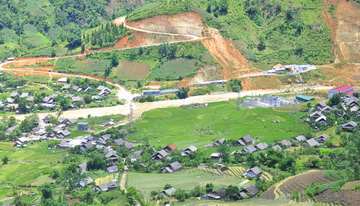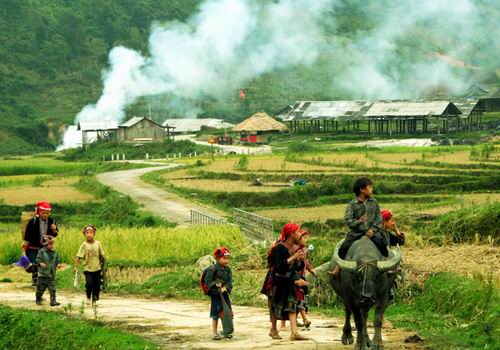



.jpg)
Le Phan Xi Pang (orthographes alternatives Fansipan, Fan Si Pan et Phan Si Phăng) est une montagne se trouvant au nord-ouest du Việt Nam dans la province de Lào Cai. Appelée le toit du Viet Nam, haute de 3143 m, elle est le point culminant de l'Indochine.Ses environs,...

Le village Ban Den est situé dans la commune de Ban Ho, district Sa Pa, province Lao Cai. Ici, les visiteurs auront la chance de découvrir les merveilles de la nature, d’apprendre davantage sur la culture unique des peuples autochtones et de vivre dans une ambiance...
.jpg)
Bac Ha est célèbre pour son marché du dimanche matin, où des milliers d'habitants se rassemblent, les femmes vêtues de leurs costumes faits à la main très colorés (il faut de trois à cinq mois pour broder un à la main),...

Le village Cat Cat est situé dans le district Sa Pa, province Lao Cai, à 2 km au nord-ouest du bourg Sa Pa. Il s’agit d’un village séculaire de l’ethnie H’Mong qui conserve des coutumes et pratiques uniques qui n’existent pas encore ou pas...
.jpg)
Le vieux champ de pierre de Sa Pa a été découvert en 1925. Il mesure 8 km² de largeur avec près de 200 blocs de pierre ayant des dimensions et des figures gravés différents comme : un dessin de végétal, des motifs...

Hoang A Tuong Castle is located in Na Hoi Tho Hamlet, Bac Ha District, Lao Cai Province. It is a unique construction work, which harmonizes the Oriental and Western architectural styles.The castle was built at the beginning of the 20th century (between 1914 and 1921). Its owner was Hoang Yen Chao...
.jpg)
Ham Rong se trouve à proximité de la ville de Sapa, à 3 km, les visiteurs peuvent y aller à pied. Restez sur le sommet Ham Rong, vous aurez une vue panoramique de Sapa, la vallée de Muong Hoa, Sa Pả, Tả Phìn cachés dans le brouillard....

Soyez le premier à connaître nos offres de voyage exclusives et les nouveaux circuits !.